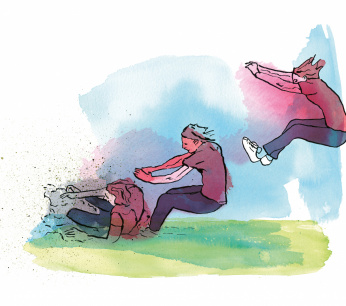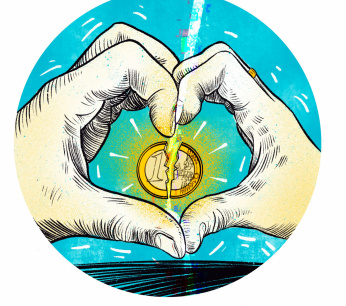Get a taste of real life at the vocational secondary school
A HAVO with more attention to practical lessons seems to motivate HAVO students and prepare them better for further studies. “It makes their school days more fun. They see the context. Understand what they need that math for.”
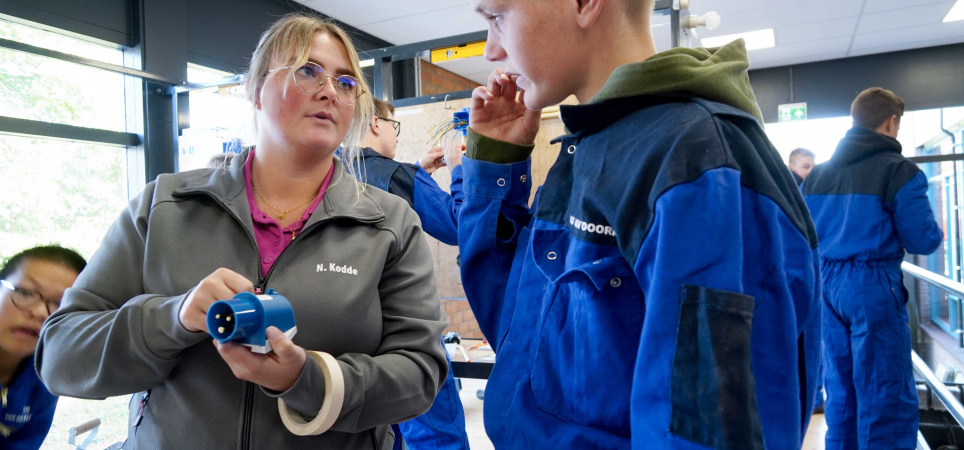
Image Rob Niemantsverdriet
The break is not even over when the students are already at their lockers. They quickly put on the blue overalls over their clothes and exchange their sneakers for safety shoes. With an impressive toolbox, they are bending a yellow electrical conduit within two minutes and are discussing an electrical circuit to be installed.
A group of other students put on the safety goggles and rush to the computer-controlled laser cutting machine. VMBO students? No. Havo students from the lower years of the Calvin College in Goes. Every Thursday, these so-called 'vak-havists' work in the practical classrooms in Krabbendijke, where the pre-vocational secondary education branch of their school is located. “The best day at school”, they agree.
You can read this article for free from the Education magazine of December. Want to stay informed of everything that is happening in education? Join the AOb! And receive the Education magazine every month.
CHECK ALL THE BENEFITS OF MEMBERSHIP
Calvin College was one of the first schools to introduce subject HAVO seven years ago. Govert Kamerik, havo team leader at Calvin College in Goes, is widely regarded as the founding fathers of the subject-havo concept. His approach, in many variants, is widely followed. Next school year, 26 schools will participate in a pilot. In three years' time, various practice-oriented programs under the collective name HavoP will be official exam subjects. The Learning Plan Development Foundation is now working on final objectives for a small (120 study load hours) and a large (360 hours) variant.
Flow through
HAVO has been a problem for decades. Havists are relatively often retained: only one in three boys graduates in five years. When havo graduates move on to higher vocational education, there are many dropouts. If they do complete HBO (four years), it takes them a long time to do so: 30 percent of girls have a HBO diploma or bag ten years after secondary school. For boys it is only 10 percent.
'Havists are seen as pimped-up pre-vocational secondary education students or as failed pre-university education students'
The HAVO student has no clear identity, reports the website of the Havo platform. “They are seen as pimped-up pre-vocational secondary education students or as failed pre-university education students.” Arna Roersma, deputy director at Carmel College in Oldenzaal: “Every teacher knows the challenge of continuing to motivate HAVO students.” Govert Kamerik: “The Havist has brains enough, but how do you get them moving, that is the question. If you tell them to do or learn something 'because it will be useful later', they will soon say hello!”
'Children with a HAVO recommendation enter the first year enthusiastically, but somehow their desire to learn disappears within a few years,' says economics teacher Bart Schuchard in the brochure. Havo of the Future. 'We want to look for that elusive element, which is why those havo students in particular show so little intrinsic motivation.' The havist tends to show 'consumptive behavior', says one of the teachers: 'Let's sit back and let the teacher talk.'
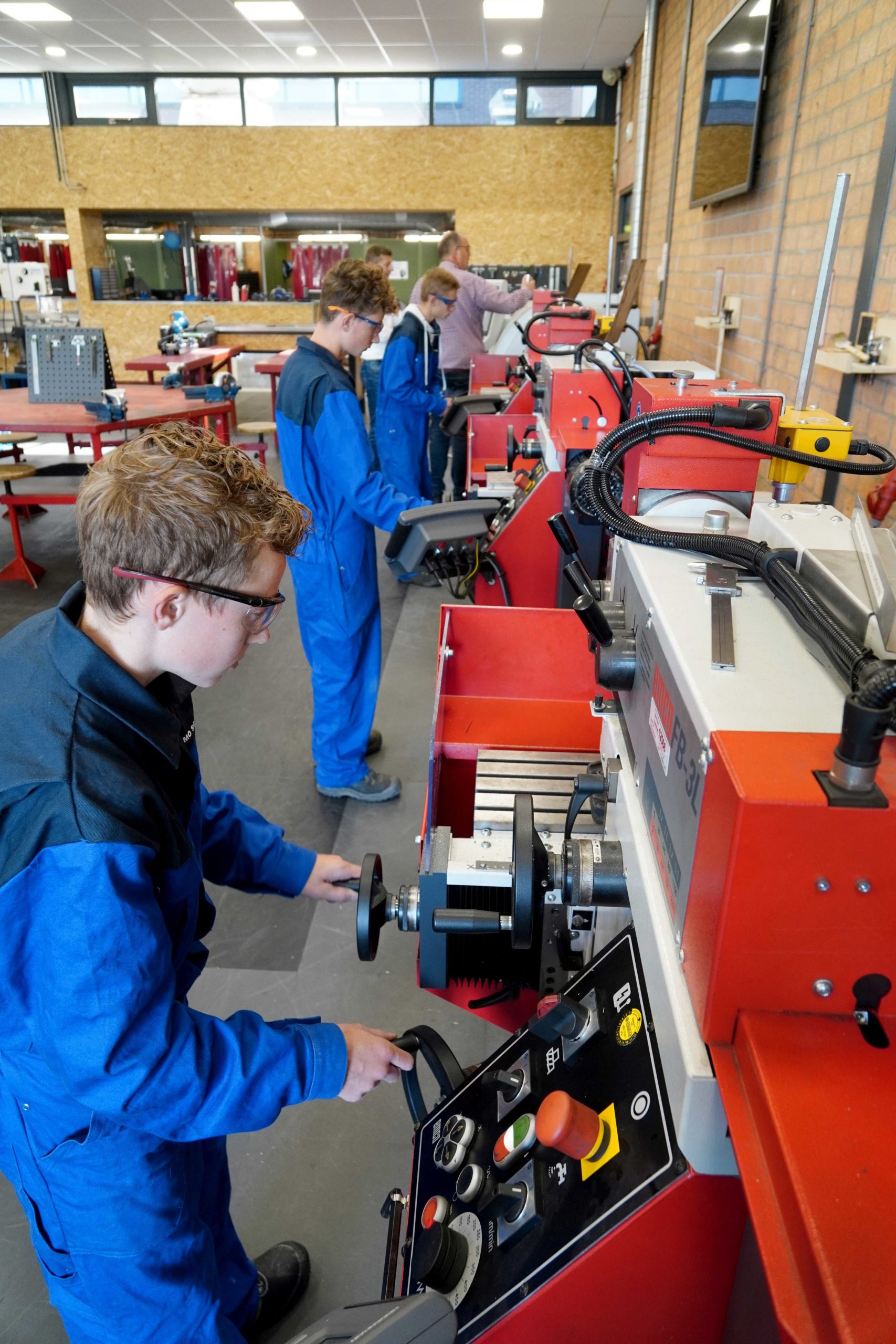
The vocational havo is not suitable for every havo student, say all those involved. “But for intelligent doers.” Image: Rob Niemantsverdriet
The realization has now become widespread that the way in which lessons are taught at HAVO does not suit some of the students. Arna Roersma of Carmel College: “They only get theory at HAVO, while some of them are students who like to get out and do something with their hands.” Govert Kamerik: “Havo prepares for HBO, but that b, the vocational component, is completely absent in HAVO education.” Havists lack the context of what they have to learn, says Roersma. “What do they need that math for? If you can show that and if they can experience it for themselves, then that is extremely motivating.”
Practical lesson
That's exactly what happens in vocational havo, says Kamerik. Pupils who opt for this at Calvin College receive practical lessons one day a week in the lower years, and do an internship one day a week in the upper years at a company in the region. The profile paper they write must tie in with their internship. They also follow the normal compulsory HAVO programme, but have fewer self-study hours, so they are actually busier than their fellow students.
The way you teach this group is different, says Martin van de Zande, physics teacher at Calvin College. “You relate the theory to their context, what they are working on on those Thursdays. What about the hardening process of concrete, calculate the forces on a supporting beam, how do you design a sturdy dormer window and calculate the efficiency of a high-efficiency boiler. This way they see the connection between theory and practice, see the relevance of what they have to learn.”
HAVO prepares for HBO, but that b, the professional component, is completely absent in HAVO education
Naturally, vocational havo is not suitable for every havo graduate, say all those involved. “But for intelligent doers.” It is 'contextual learning', is how the Havo platform describes it.
At the moment, havo programs mainly run technical programmes, but there are also economic, business school-like concepts being developed and programs on social studies and care.
“Each school should be able to shape the practical havo concept itself,” says Govert Kamerik. “Depending on your own possibilities, the interest of the students and the VMBO-MBO schools in the area with a well-equipped and suitable working environment for the practical hours.”
Because he considers himself lucky with his fantastically furnished practice rooms. “Everything is here, milling machines, laser equipment, a computer-controlled lathe: they just learn to work with it.” This is of course not feasible at all schools, but, he warns: “You have to make sure that it does not become pasting and cutting with paper and cardboard. You must have the facilities and machines to make prototypes. Perhaps there should be some kind of standard module for a technology room that you can place in a room.”
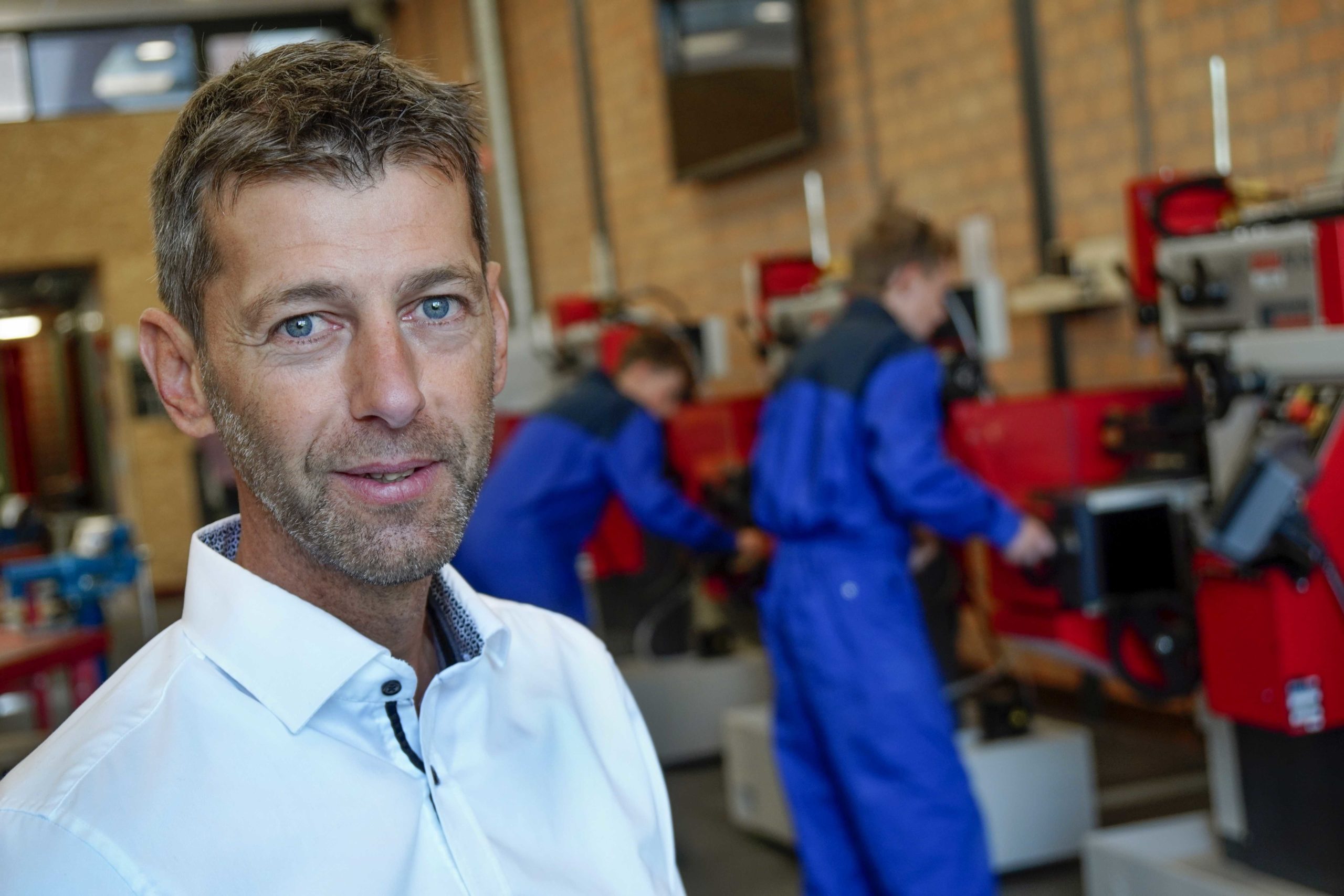
The way you teach subject havists is different, says Martin van de Zande, physics teacher at Calvin College. “You relate theory to practice, so they see the relevance of what they need to learn.” Image: Rob Niemantsverdriet
At Carmel College in Oldenzaal, havo is also undergoing rapid change. Together with fifteen other schools in the east of the Netherlands, Carmel College participates in the Havo of the Future programme, under the supervision of Saxion University of Applied Sciences in Enschede. “Havo is not vwo-light. It should become more preparatory higher vocational education,” says program manager Arjan van Basten.
More fun school time
Deputy director Arna Roersma: “The underlying idea is to make their school days more fun, so that they get their HAVO diploma. But also to give them a better idea of what a profession entails, and what they need to know and be able to do. This way, they can also make a more conscious choice for a higher vocational education.”
Saxion University of Applied Sciences is investigating how the connection between HAVO and HBO can be improved, which will hopefully reduce the number of dropouts in the first HBO year. This is done, for example, by guiding teachers in a different way of teaching, and also by introducing practical HAVO. Roersma: “They can already get a taste of real life here: what do they like, what are they good at? That motivates, we hope.” During the practical lessons, the students work a lot together and also a lot independently. “Also good preparation for higher professional education. We see that they are now more motivated in the other lessons as well.”
A vmboer imitates what you show. Subject-havists immediately ask questions
But surely a higher vocational education graduate won't be behind the machines himself later on? “No, they are the people who will lead. But if you know how a laser cutter works and how to program a robot, we think that makes a difference. Companies need highly trained professionals. Due to the arrival of increasingly advanced machines and complex production lines, there is more demand for employees at higher vocational education level.” Kamerik: “They feel all the materials here, know the techniques and are thus better able to choose where they want to work later and what training they need for this.”
Eager to learn
Teachers who teach both VMBO and HAVO students notice the differences. Sjaak Minderhoud: “A vmbo student imitates what you show. Subject-havists immediately ask questions. They pull all the information out of you, they are much more eager to learn.” Companies in Zeeland are enthusiastic about bringing in this group as trainees. Govert Kamerik: “Of course everyone hopes that these young people will stay in the province and also go to work here later.”
Just outside the room is a huge steel lion on a wooden platform. Students are busy assembling lighting and a sprinkler. A fountain for Reimerswaal, the contractor asked the havists to help. Sjaak Minderhoud: “That image will soon be visible to everyone in the village centre. That of course makes these lessons completely fun and meaningful.”
Also read: Tug of war for the mavo student
